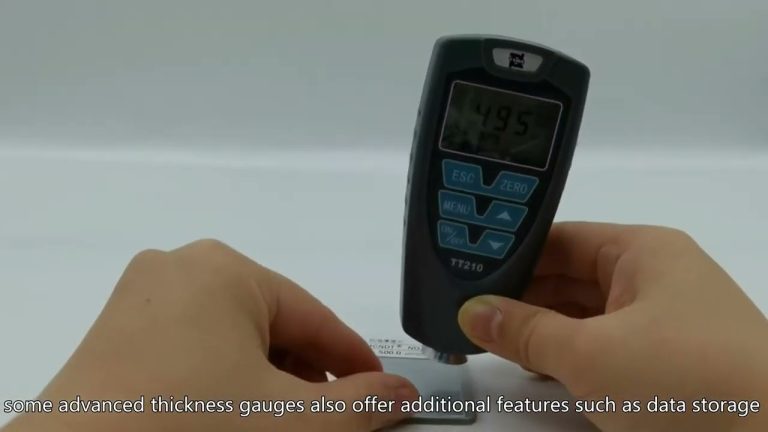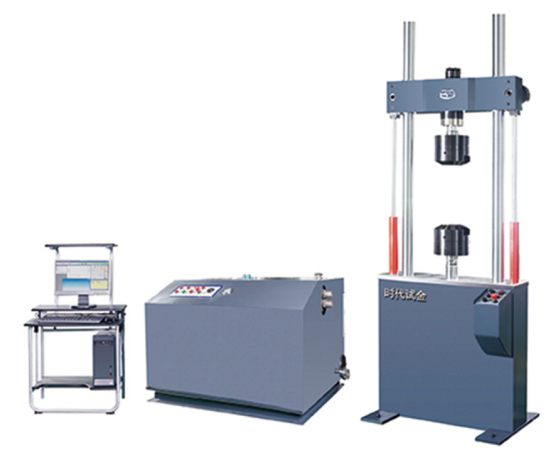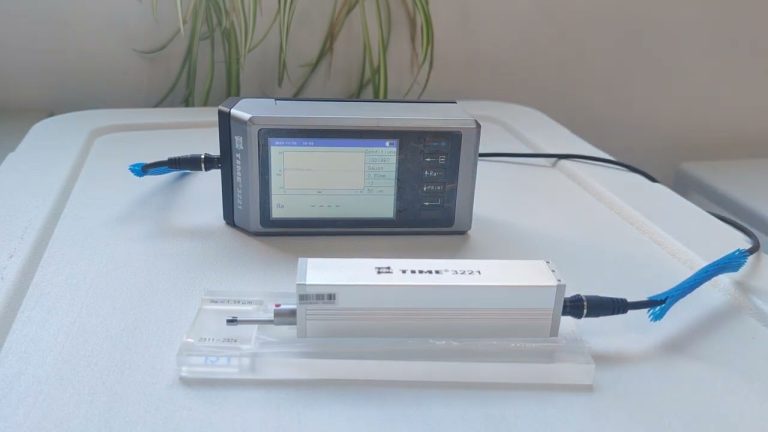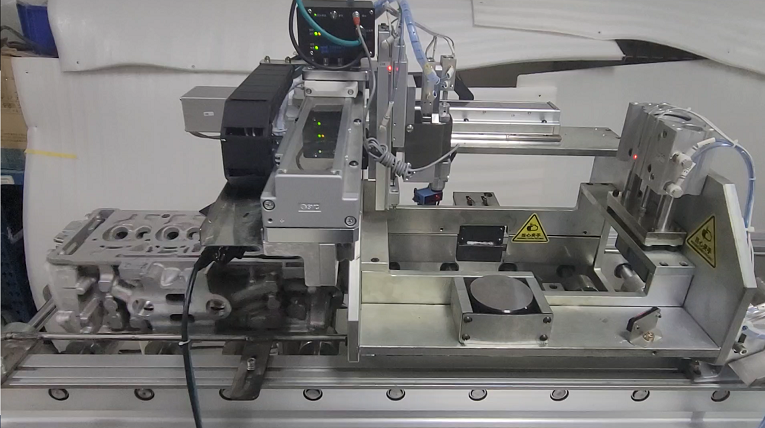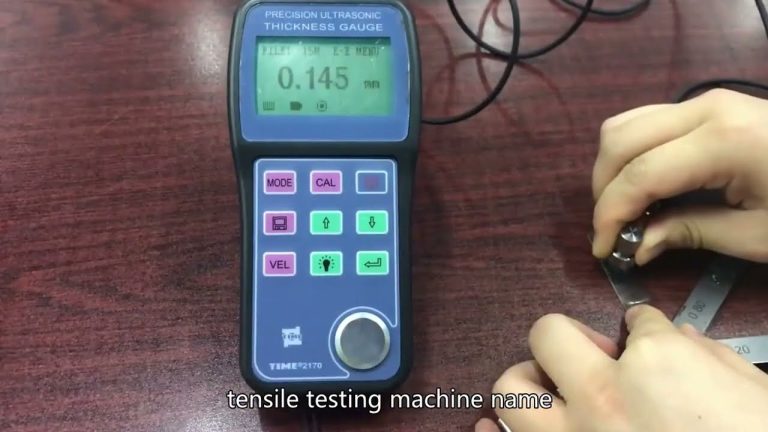Principle of Leeb hardness tester and reasons affecting accuracy
An impact body of specified mass is used to impact the surface of the sample at a certain speed under the action of elastic force. The value calculated by using the ratio of the rebound speed of the punch at a distance of 1mm from the sample surface to the impact speed is the Leeb hardness. The Leeb hardness tester is actually an improved version of the Shore hardness tester. They measure the remaining energy of the impact body after the plastic deformation of the sample consumes energy on the surface of the sample.
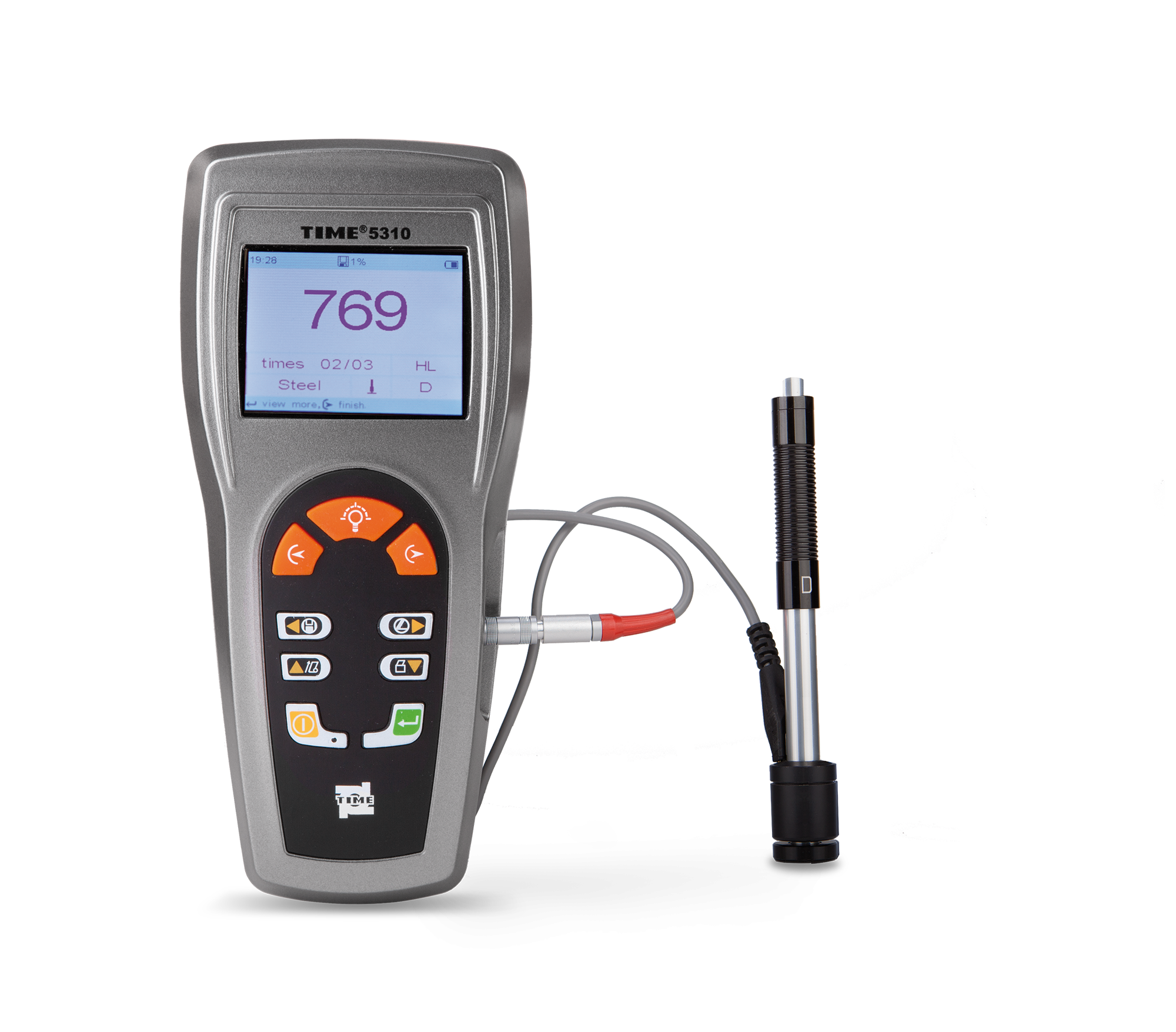
The calculation formula for Leeb hardness is as follows:
HL=1000×ν /ν
In the formula: HL————Leeb hardness symbol
ν————The impact speed of the ball head, m/s;
ν ————The rebound speed of the ball head, m/s.
- Leeb hardness tester impact device
There are seven types of Leeb hardness: D, DC, D=15, C, G, E, and DL:
D: Dimensions: f2070mm, weight: 75g. Universal type, used for most hardness measurements. DC: Dimensions: f2086mm, weight: 50g. Impact devices are short and are mainly used in very tight places, such as inside holes or cylinders.
D+15: Dimensions: f20162mm, weight: 80g. The head is small and is used for measuring the hardness of grooved or recessed surfaces. C: Dimensions: f20141mm, weight: 75g. It has the smallest impact energy and is used to measure small, light and thin components and surface hardened layers.
G: Dimensions: f30254mm, weight: 250g. The impact energy is large and the requirements on the measuring surface are low. Used for large, heavy forged castings with rough surfaces. E: Dimensions: f20162, weight 80g. The indenter is made of artificial diamond and is used for measuring extremely hard materials.
DL: Overall dimensions: f20*202mm, weight: 80g. The head is smaller and used for measuring the hardness of narrow grooves and gear surfaces.
- Use of special-shaped support rings
In field work, we often encounter curved test pieces. Various curved surfaces have different effects on the hardness test results. When operated correctly, the instantaneous position of the impact on the surface of the test piece is the same as that of the flat test piece, so the universal support ring is Can. However, when the curvature is small to a certain size, the elastic state of deformation due to plane conditions is significantly different, which will cause the rebound speed of the impact body to be low, thus making the Leeb hardness indication value low. Therefore, for specimens, it is recommended to use small support rings when measuring. For specimens with smaller curvature radius, it is recommended to use special-shaped support rings. - Measuring range of Leeb hardness tester
According to the Leeb principle, as long as the material has a certain degree of rigidity and can rebound, the accurate Leeb hardness value can be measured. However, there is no corresponding conversion relationship between the Leeb hardness of many materials and the hardness of other systems. Therefore, the Leeb hardness tester is currently only equipped with Conversion tables for 9 materials. The specific materials are as follows: steel and cast steel, alloy tool steel, gray cast iron, ductile iron, cast aluminum alloy, copper-zinc alloy, copper-tin alloy, pure copper, stainless copper.
For some samples of special materials, users can use the fitting curve software provided by the company to make a special conversion table. In actual production, a variety of metal materials are used. Since the Leeb hardness tester is sensitive to the processing method and alloy element composition of the material, the hardness conversion table stored in the Leeb hardness tester chip cannot all meet the needs of the user. , users can use the fitting software to make their own dedicated hardness conversion table during testing.
- Factors affecting the testing accuracy of Leeb hardness tester
1) Errors caused by data conversion
The error when converting Leeb hardness to other hardnesses includes two aspects: on the one hand, the measurement error of Leeb hardness itself, which involves the dispersion when testing according to the method and the measurement error of multiple Leeb hardness testers of the same model. On the other hand, there is the error caused by comparing the hardness measured by different hardness testing methods. This is due to the fact that there is no clear physical relationship between the various hardness testing methods and is affected by unreliable measurements in mutual comparisons.
2) Errors caused by special materials
The conversion table stored in the hardness tester may produce deviations for the following steel types:
All austenitic steels
Hard materials such as heat-resistant tool steel and ledeburite chromium steel (tool steel) will cause the elastic modulus to increase, resulting in a low L value. Such steels should be tested in cross-section
Local cooling and hardening will cause the L value to be high
Magnetic steel will have a low L value due to the influence of the magnetic field.
For surface-hardened steel, the matrix is soft, which will cause the L value to be low. When the hardened layer is greater than 0.8mm (0.2mm for C-type impact device), the L value will not be affected.
3) Errors in gear detection
In general, due to the small tooth surface, the test error is relatively large. For this, the user can design corresponding tooling according to the situation, which will help reduce the error.
4) Influence of material elasticity and plasticity
In addition to being related to hardness and strength, the Leeb value is also related to the elastic modulus. The hardness value is a characteristic parameter of the material’s hardness and plasticity, because the components of the two must be measured together.
In the elastic part, it is first obviously affected by the E modulus. In this regard, when the static hardness of the materials is the same but the E value is different, the material with a low E value will have a larger L value.
5) Error caused by hot rolling direction
When the workpiece to be tested is formed by hot rolling process, if the test direction is consistent with the rolling direction, the test value will be low because the elastic modulus E is too large, so the test direction should be perpendicular to the hot rolling direction. For example: when measuring the hardness of a cylindrical section, it should be tested in the radial direction. (Generally, the direction of cylindrical hot rolling is axial).
6) Influence of sample weight, roughness and thickness
Specimen
Impact device Test piece weight (kg) Minimum thickness
(mm) Minimum surface roughness
Light Medium Heavy Duty Specimen Hardened Layer ISO Ra Rz
Needs coupling, needs stability, can be directly
D: DC; D+15; DL 0.05-2 2-5 >5 3 0.8 N7 2m 10m
G 0.5-5 5-15 >15 10 N9 7m 30m
C 0.02-0.05 0.5-1.5 >1.5 1 0.2 N5 0.4m 2.5m
7) The magnetism of the test piece should be less than 300 Gauss
8) Influence of other factors
When measuring the hardness of pipe fittings, attention should be paid to: pipe fittings should be firmly supported. The test point should be close to the support point and parallel to the support force. If the pipe wall is thin, an appropriate core should be placed in the pipe.


